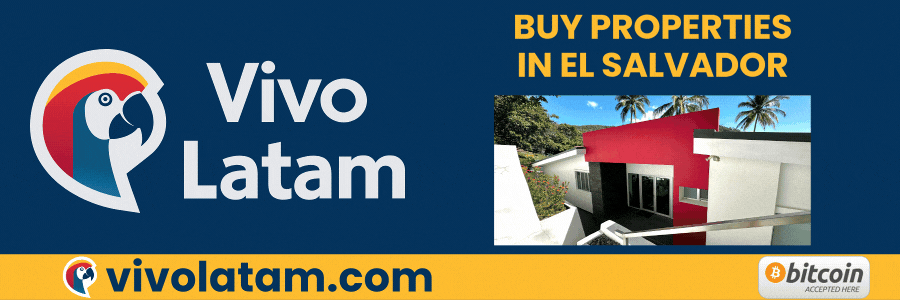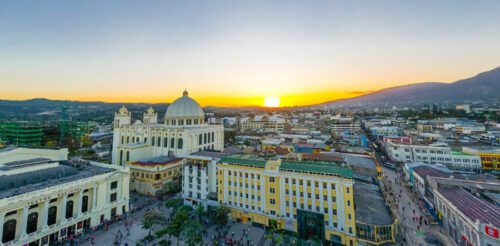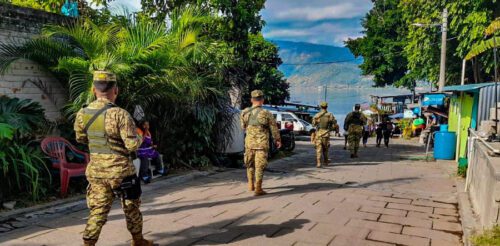Since 2021, El Salvador is experiencing levels of security never seen before, or at least not in the last 40-plus years. This improved security is good news for Salvadorans; however, it will not help solve the country’s financial and poverty problems unless education improves.
Without a doubt, education in El Salvador needs to improve! A clear evidence of this needed improvement is that the average grade attained by Salvadorans at a national level is 7.3.
Problems with education in El Salvador are nothing new. The current educational issues stem from the previous administration’s failure to address them. This is evident in the analysis of school attendance, level of schooling reached, and illiteracy rate.
School Attendance
The most recent Salvadoran Multipurpose Household Survey, released on July 2024, revealed that only 55.0% of Salvadorans aged 4 to 29 attended school in 2023. This age range is when most individuals receive their education.
In urban areas, the school attendance rate is 58.1%, which is 3.1 points higher than the national average. Contrarily, in rural areas, the rate drops to 50.6%
| 2019 | 2020 | 2021 | 2022 | 2023 | |
|---|---|---|---|---|---|
| Nationally | 26.1 | 25.3 | 24.4 | 52.6 | 55.0 |
| Urban | 26.6 | 25.6 | 24.9 | 56.0 | 58.1 |
| Rural | 25.3 | 24.7 | 23.7 | 47.8 | 50.6 |
| Males | 27.9 | 26.6 | 25.9 | 52.9 | 55.5 |
| Females | 24.4 | 24.1 | 23.2 | 52.3 | 54.5 |
When broken down by age within the 4 to 29 range, it becomes clear that most Salvadorans not attending school are in the 18 to 29 age group, the university or higher education years. According to the survey, only 18.6% of this age group attended school in 2023.
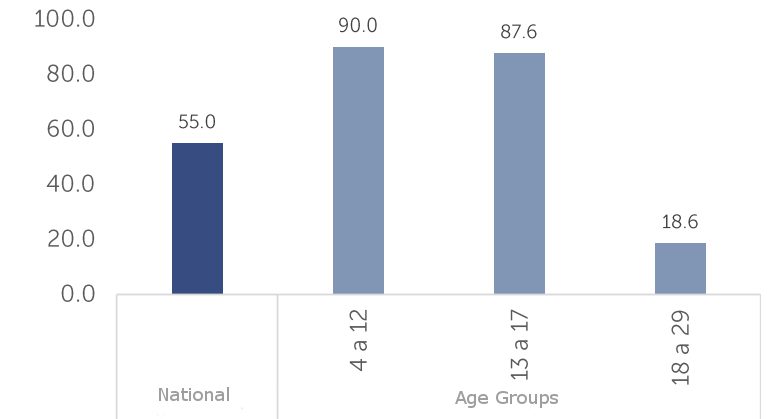
| 2019 | 2020 | 2021 | 2022 | 2023 | |
|---|---|---|---|---|---|
| Ages 4 to 12 | 86.5 | 84.4 | 83.7 | 87.1 | 90.0 |
| Ages 13 to 17 | 81.2 | 83.8 | 82.0 | 83.8 | 87.6 |
| Ages 18 to 29 | 20.4 | 20.1 | 18.2 | 18.0 | 18.6 |
Access to higher education in El Salvador is a problem that results in a low percentage of people going to college. Approximately 80 to 88 out of every 100 students re excluded from higher education. This longstanding issue has yet to be resolved by any Salvadoran government.
Undoubtedly, higher education remains out of reach for most Salvadorans. Two primary obstacles are access to higher learning institutions and the cost of attendance.
El Salvador has 38 higher education institutions, 24 universities, one public and 23 private. The remaining 14 include eight technological institutes and six specialized institutes, all of which are private.
Most of these educational institutions are concentrated in the capital city, San Salvador. Therefore, most students can’t afford to move to the capital city or pay the tuition.
Also, the University of El Salvador, the only state-owned public university, only has a presence in four of the fourteen departments and doesn’t have the capability of accepting all students who apply.
SEE ALSO: Poverty in El Salvador, an Issue that Leads to Crime and Migration
Educating and doing it well, with high-quality standards, is a fundamental “preventive” condition for many aspects of society; health, traffic, safety, the environment, etc. Educated people commit fewer crimes, reflect and analyze options, and have more and better employment opportunities. Oscar Picardo, Gavidia University.
To improve education in El Salvador, the government must ensure that students get access to suitable schools, especially at the university level. Many Salvadorans do not attend college because it is difficult to access them, and they are too expensive.
This is one of the main challenges that need solving to improve education in El Salvador.
Level of Schooling Reached by Salvadorans
Another clear indicator that El Salvador’s education system needs improvement is that the average level of schooling achieved by Salvadorans is only 7.3 grades.
The situation is worse in rural areas, where the average school grade drops to 5.6. In urban areas, the average school grade is 8.3, which, although better, is still insufficient.
| 2019 | 2020 | 2021 | 2022 | 2023 | |
|---|---|---|---|---|---|
| National | 7.1 | 7.2 | 7.1 | 7.2 | 7.3 |
| Urban | 8.2 | 8.2 | 8.1 | 8.2 | 8.3 |
| Rural | 5.3 | 5.5 | 5.5 | 5.6 | 5.6 |
| Male | 7.3 | 7.4 | 7.2 | 7.3 | 7.4 |
| Female | 7.0 | 7.0 | 7.0 | 7.1 | 7.2 |
The main disparity in the average level of schooling among Salvadorans is based on their location. In rural areas, the average schooling achievement is 1.7 grades lower than the national average, while in urban areas, it is 1.0 grade higher.
Illiteracy Rate in El Salvador
The national illiteracy rate in El Salvador is 9.3%, which is relatively low compared to other impoverished countries that typically have higher illiteracy rates. This is positive news for El Salvador.
The main concern with the country’s national illiteracy rate is the disparity between regions: in rural areas, the rate is 14.5%, more than double the 6.2% rate in urban areas.
| 2019 | 2020 | 2021 | 2022 | 2023 | |
|---|---|---|---|---|---|
| National | 10.0 | 9.6 | 10.0 | 9.7 | 9.3 |
| Urban | 6.6 | 6.3 | 6.8 | 6.5 | 6.2 |
| Rural | 15.7 | 15.1 | 15.5 | 15.2 | 14.5 |
| Male | 8.1 | 7.9 | 8.1 | 7.7 | 7.5 |
| Female | 11.7 | 11.1 | 11.7 | 11.4 | 10.8 |
The Department of San Salvador has the lowest illiteracy rate in the country at 4.3%, followed by La Paz at 8.5%. On the other hand, the Morazan Department has the highest illiteracy rate at 17.7%, with La Union coming in second to last at 16.5%.
SEE ALSO: The Struggles of Living in Rural Areas of El Salvador
Education in El Salvador
The educational system in El Salvador has many challenges to overcome: equitable access, low academic performance, repetition, school dropout, and infrastructure quality, among others.
These challenges have caused the level of schooling reached by Salvadorans to remain low; undoubtedly, they need to be overcome for El Salvador to prosper.

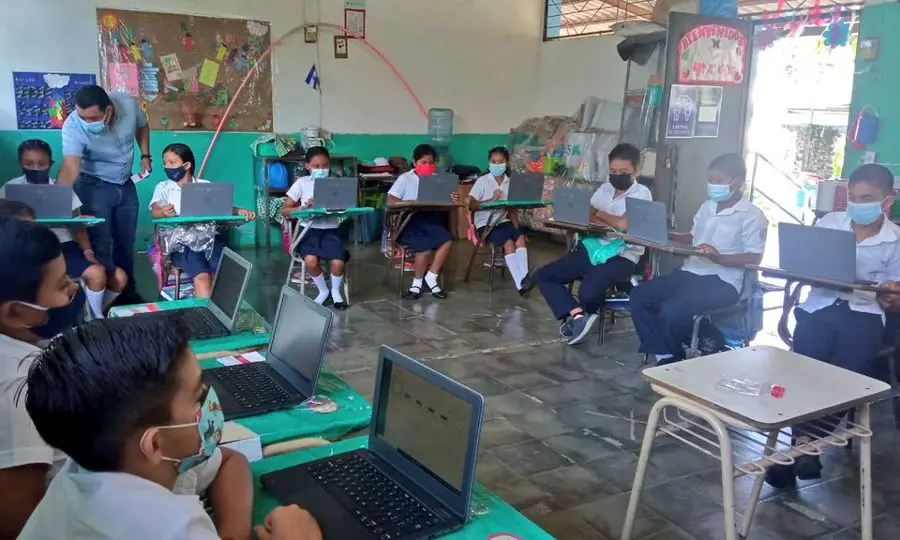 Salvadoran students. Image by
Salvadoran students. Image by 